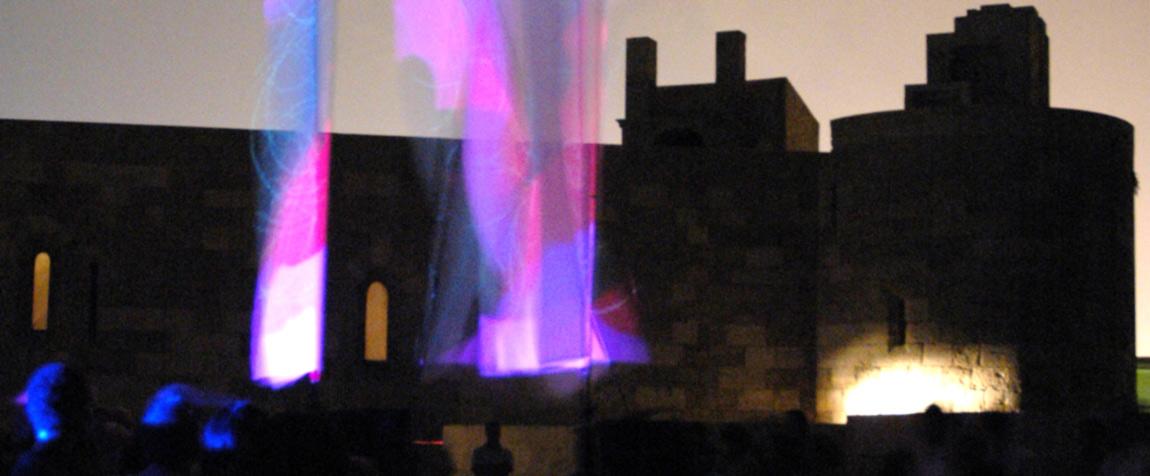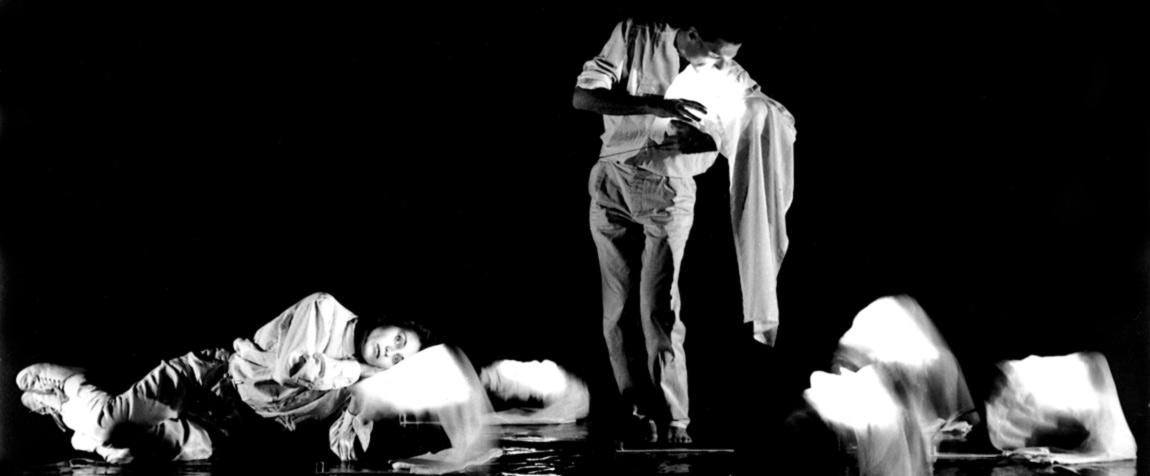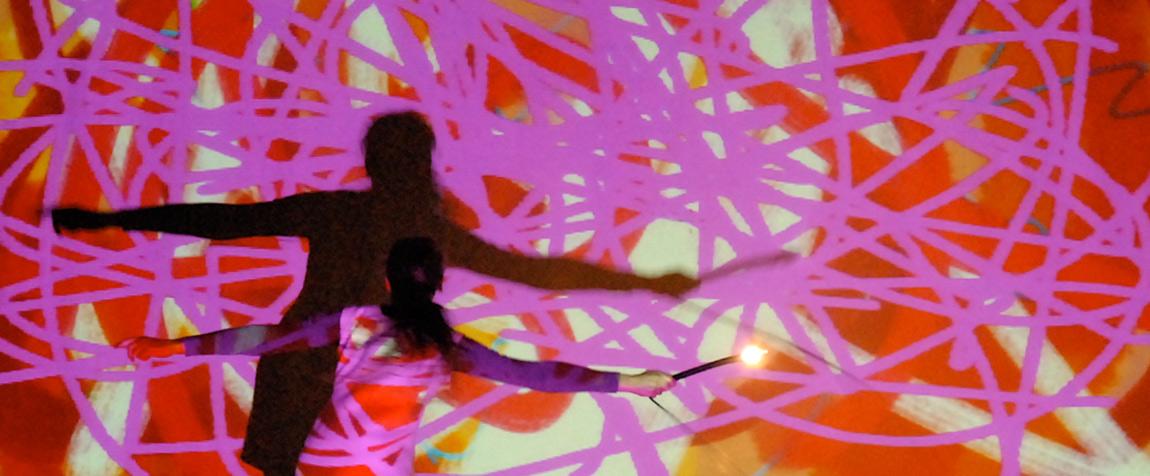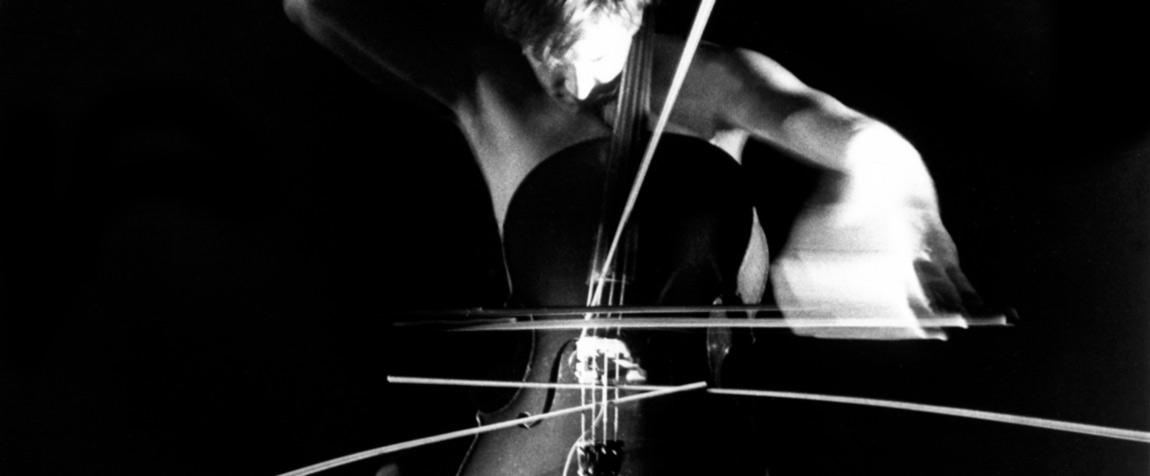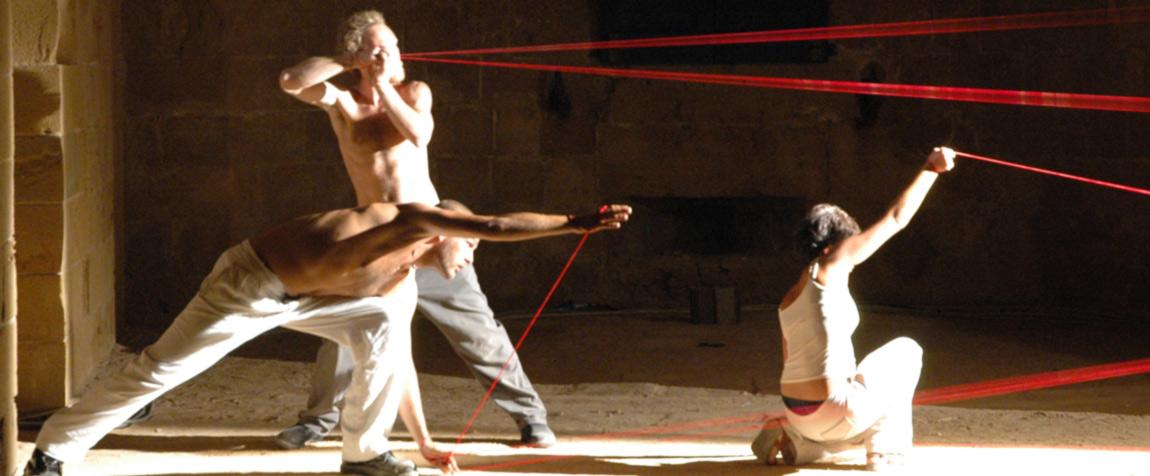Picablo
Trilogia della pittura in scena/secondo movimento
Età consigliata: dai 6 anni
Durata: 55 minuti
Nella sua sterminata produzione abbiamo individuato alcuni temi e ricercato il ritmo interno delle immagini pittoriche. E così, come il lavoro artistico di Picasso è racchiuso in periodi, abbiamo racchiuso il nostro lavoro teatrale in episodi.
Tutto ha inizio nello studio del pittore. E' lì che i quadri prendono vita, vengono interpretati, abitati e trasformati. Lo studio, luogo di scoperte e rivelazioni inattese, si apre poi all'esterno. Un esterno attraversato in compagnia di saltimbachi e tori, ballerine, colombe, arlecchini e toreri...
All'inizio è un Picasso vecchio quello che dal suo studio ci guarda. Lentamente andrà indietro nel tempo fino a tornare bambino.
Nello studio, sui cavalletti, sono posati i pannelli/quadro e c'è un gran da fare a spostarli più avanti o più indietro a destra o a sinistra per cogliere frammenti delle immagini proiettate, con movimenti lenti o con ritmica concitazione. Sono i quadri, la pittura, a ispirare e guidare le azioni dei performer che, nelle vesti dei due Custodi del circo museo ambulante Picablo, ci invitano ad entrare nella magia dell'arte visiva.
Spettacolo vincitore dell'Honor Award John Dorman 2011 per artisti stranieri assegnato dalla sezione polacca di ASSITEJ – International Association of Theatre for Children and Young People e del Grand Prix XIX International Puppet Theatres 'Festival Meetings 2012' città di Torun (Polonia)
ENGLISH VERSION
Pablo Diego Josè Francisco Juan Maria Cipriano Clito Patricio are only some Picasso’s many names, and they undoubtedly reveal a multiform and many-sided personality. We thus looked for Picasso’s recurring ideas and for the amazing ways he employed to represent them in his paintings, and we eventually realised that it would have been nice to perform them on the stage.
We singled out from his huge artistic production some topics, and we tried to reproduce the rhythm and the energy of his images in a play. So Picablo deals with the followings: youngness (harlequin with a girl dancing with a ball); lightness and irony (doves with a funny conjurer); love (a painter with his models); the struggle between instinct and reason (bullfight); going out of darkness, into the light (Guernica and the dove of peace); joy (painting together a canvass with lights of every colour).
An elder Picasso looks at us from his studio, and his memory will slowly go back to his past, when he was a child...
Everything begins in the artist’s studio: here paintings are firstly created and then lived, interpreted, and changed many and many times. Here is the place where new discoveries and strong epiphanies happen, leading us through open spaces, where we will meet clowns, bulls, dancers, doves, harlequins...
Playing together in the painter’s studio, actors transpose on the stage Picasso’s works by manipulating, reassembling, arranging in a different way what it can be found in his paintings.
We would like to involve the audience in a play where images are intentionally left undetermined, so that each person can be privately entertained by his own imagination. For the major part of the things in our Picablo are not to be understood, they are to be felt.
Note
Art today can employ technological instruments which are very advanced. We tried to imagine what Picasso could have created with these new tools, instead of using conventional colours and brushes. We strived to be in agreement with his attitude by means of our great experience in modern theatrical devices. We did not create some new technology, however, for our equipment consists in ordinary electronic tools, sometimes modified. In Picablo, for instance, we employ an instrument that was originally developed by video-games industry (and that is very famous among young people). By re-thinking its range of application, we changed it in a device which allows us to play with art.
Honor Award John Dorman 2011 - ASSITEJ – International Association of Theatre for Children and Young People
Grand Prix XIX International Puppet Theatres 'Festival Meetings 2012' Torun (Poland)


















